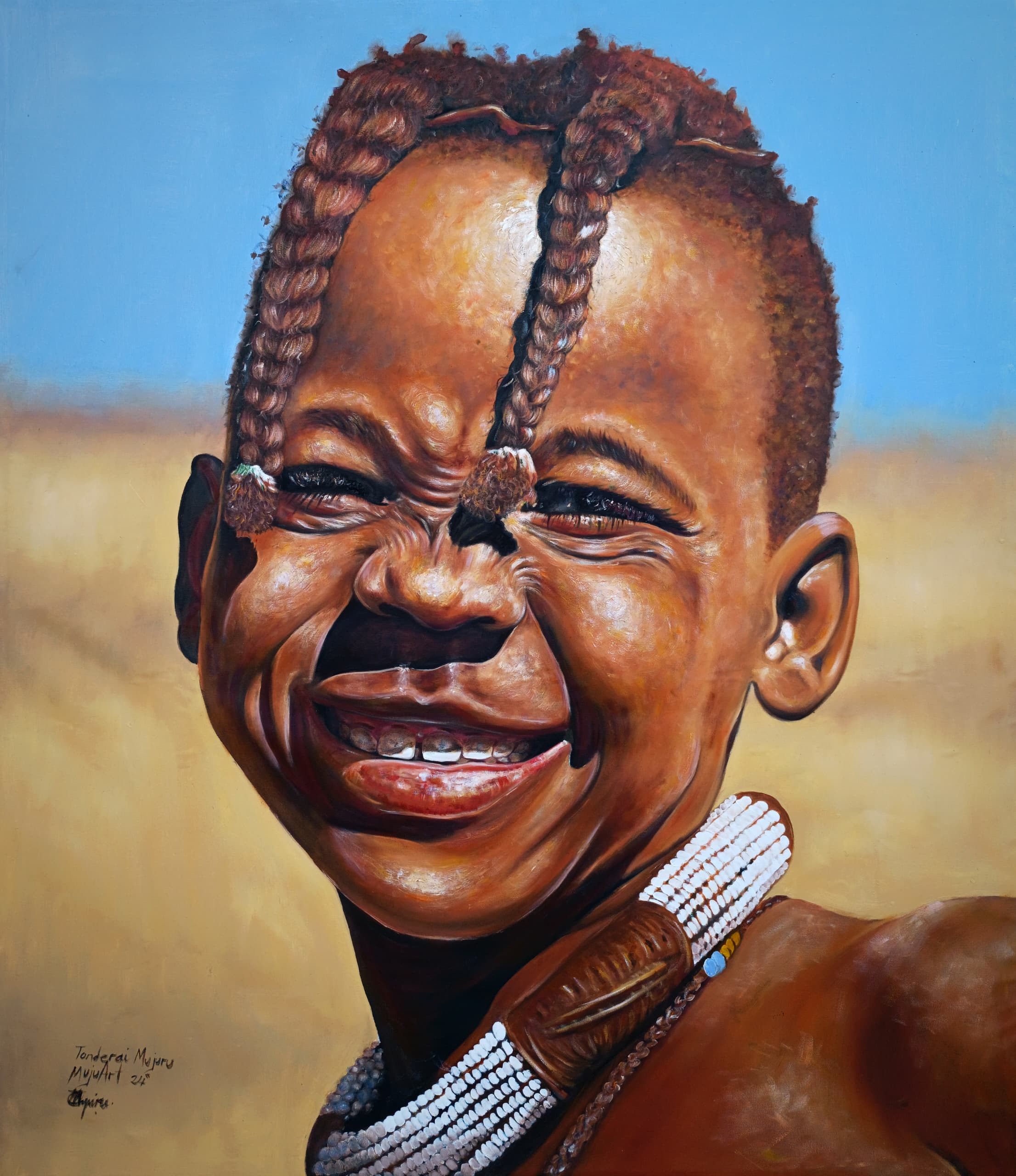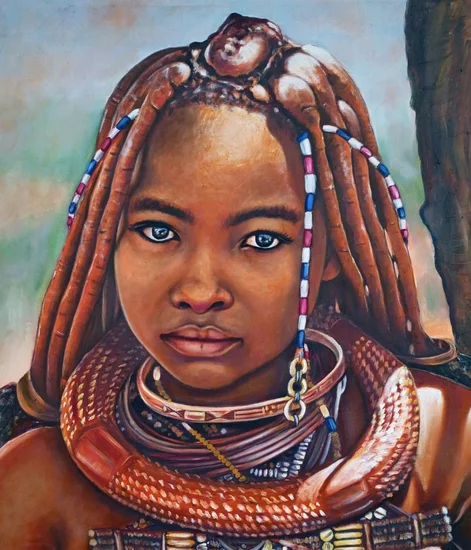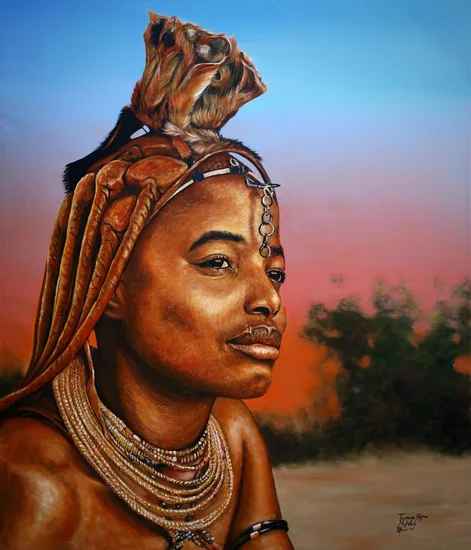Elegance and Joy: A Himba Story Through Time
In these captivating works, Tonderai Mujuru pays homage to the Himba people of Namibia, celebrating their timeless beauty, rich cultural heritage, and the profound human emotions that bind us all. Through his lens, the Himba women emerge not only as symbols of elegance but as carriers of joy and the enduring strength of motherhood. Each brushstroke offers a glimpse into a world where tradition and grace coalesce with the universal essence of happiness and love.

Through the Himba, we see grace, happiness, and the unwavering strength of motherhood. Their beauty transcends time, while their spirit resonates with all who witness their stories.
In "Elegance of the Himba: A Timeless Allure," Mujuru captures the regal beauty of the Himba women, their skin adorned with red ochre, a symbol of both tradition and pride. This painting reflects not just physical elegance but the deep cultural richness of the Damara people, passed down through generations. In "The Dawn of Happiness: A Moment Worth Cherishing," the radiant smile of a young Himba child reminds us that happiness is often found in life's simplest moments—a smile shared, a sunlit day, an embrace of the present. Mujuru urges us to live in the now, where joy and contentment lie. Finally, "The Himba Queen: A Mother's Eternal Love" speaks to the universal experience of motherhood. The queen’s steadfast gaze, her adornments, and her poise tell the story of a woman’s strength, resilience, and enduring love for her children, making her a true embodiment of maternal grace. Taken together, these three paintings form a narrative about the Himba people that is both specific and universal. Mujuru’s art invites us into a world where tradition and modernity coexist, where beauty is found in both the physical form and the intangible qualities of happiness, love, and strength. Through his portrayal of the Himba, we see reflections of ourselves—the elegance, joy, and perseverance that define the human experience, regardless of time or place.
The Dawn of Happiness
The Dawn of Happiness: A Moment Worth Cherishing" captures a more playful, spontaneous side of life among the Himba. The painting features a young child beaming with a radiant, contagious smile. Mujuru's focus on the child’s joy reminds us that happiness often stems from the simplest of moments—a shared laugh, the warmth of the sun, or the freedom of a carefree existence. The child’s unrestrained expression of joy suggests a deeper, universal truth: that despite life's hardships, moments of happiness can be found in the present if we allow ourselves to embrace them. The painting exudes warmth, not only through the golden tones that illuminate the child’s face but also through the emotional depth it evokes. Mujuru seems to be telling us that, just like the dawn of a new day, happiness can emerge unexpectedly, and its beauty is in its fleeting, yet profound, nature. "Live in the moment," this piece whispers, "for today is a gift, and happiness is within reach

Elegance of the Himba: A Timeless Allure

"Elegance of the Himba: A Timeless Allure," portrays the striking beauty and dignified presence of a Himba woman. Her skin, coated with the characteristic red ochre, represents not only a cultural symbol but also the essence of tradition, pride, and grace passed down through generations. The ochre, derived from the earth itself, connects the Himba people to their ancestral roots and the natural world around them. Her adornments, beads, and hair braids are intricate and symbolic of her role in the community, status, and personal journey. In this work, Mujuru invites us to appreciate not only the aesthetic appeal of the Himba people but also their resilience in maintaining their identity in the modern world. This piece is a celebration of both outer and inner beauty—a timeless allure that defies the passage of time.
The Himba Queen: A Mother's Eternal Love
The Himba Queen: A Mother's Eternal Love" completes the trio by delving into the universal theme of motherhood. Here, Mujuru portrays a Himba mother with an air of regal dignity, her strong yet tender features conveying a deep sense of responsibility and devotion. The mother’s adornments and headdress mark her as a figure of importance within her community, but it is her expression—a mix of strength, serenity, and resolve—that truly defines her. This painting is not just about the Himba people but about the experience of motherhood itself: a journey of sacrifice, compassion, and unwavering love that transcends time, geography, and culture. The Himba Queen, like mothers everywhere, carries the weight of her children's future on her shoulders, yet she does so with grace, patience, and an enduring strength that commands admiration. Mujuru’s portrayal elevates the figure of the Himba mother to one of universal reverence—a symbol of resilience and maternal love that is both timeless and transcendent.
